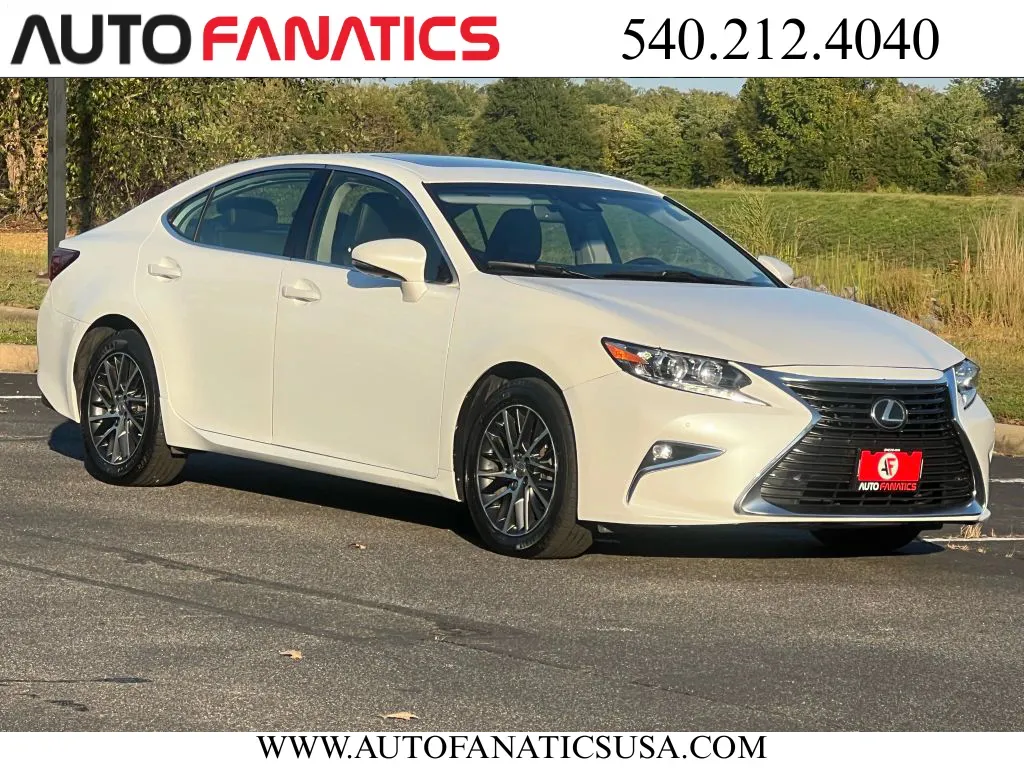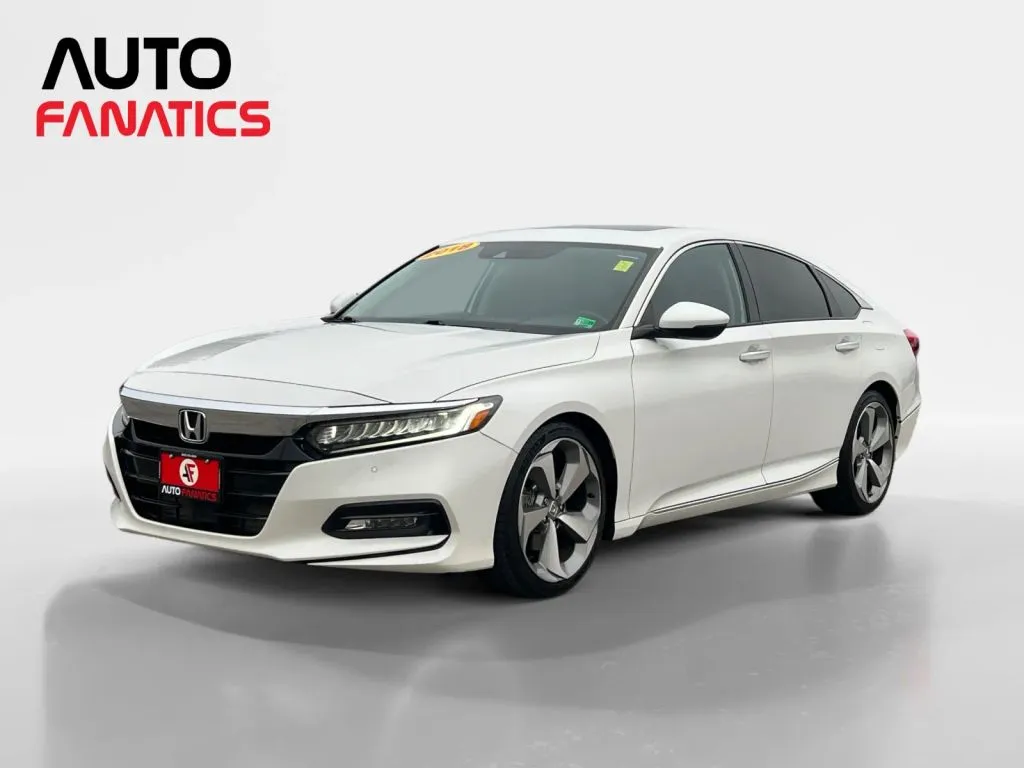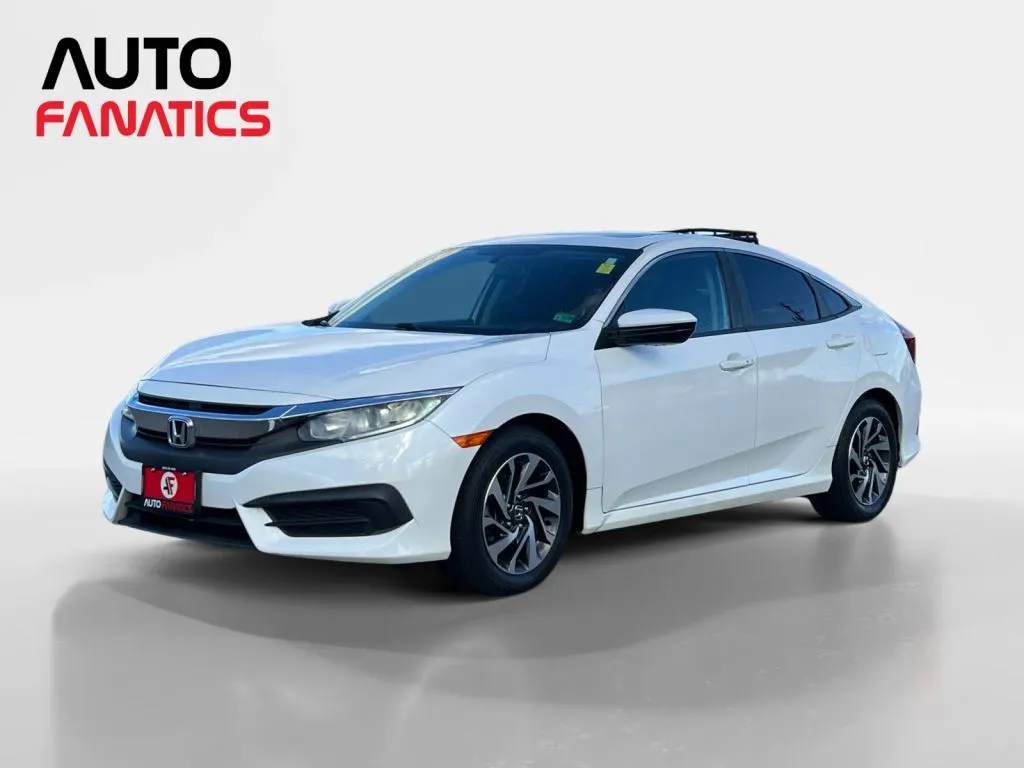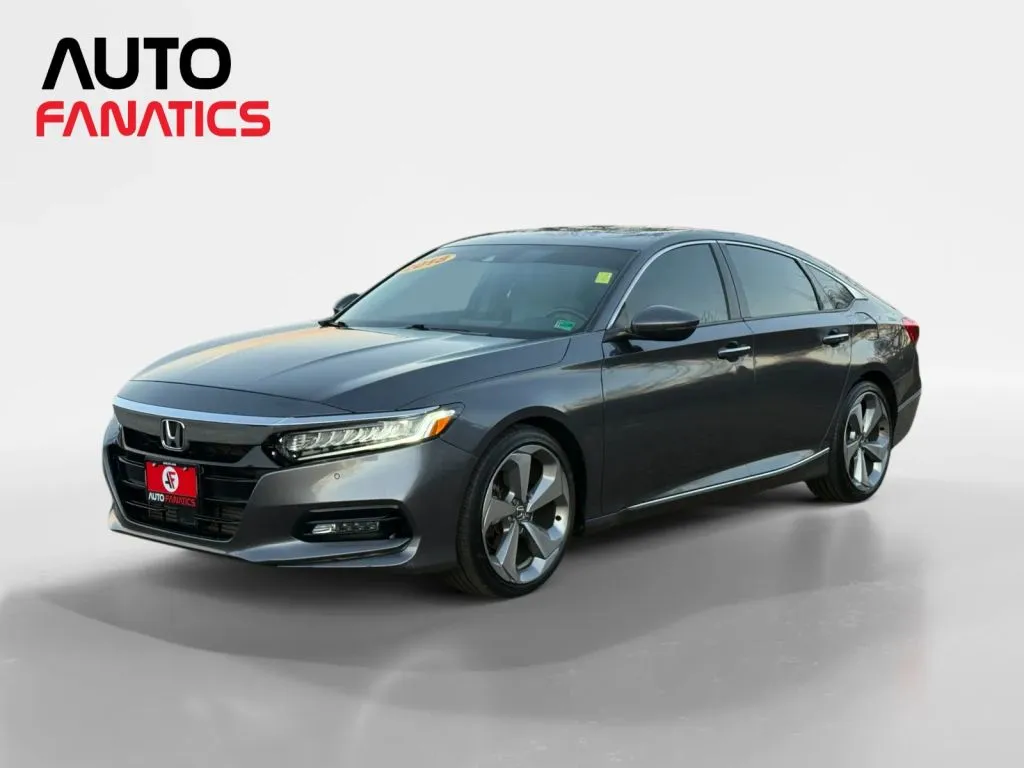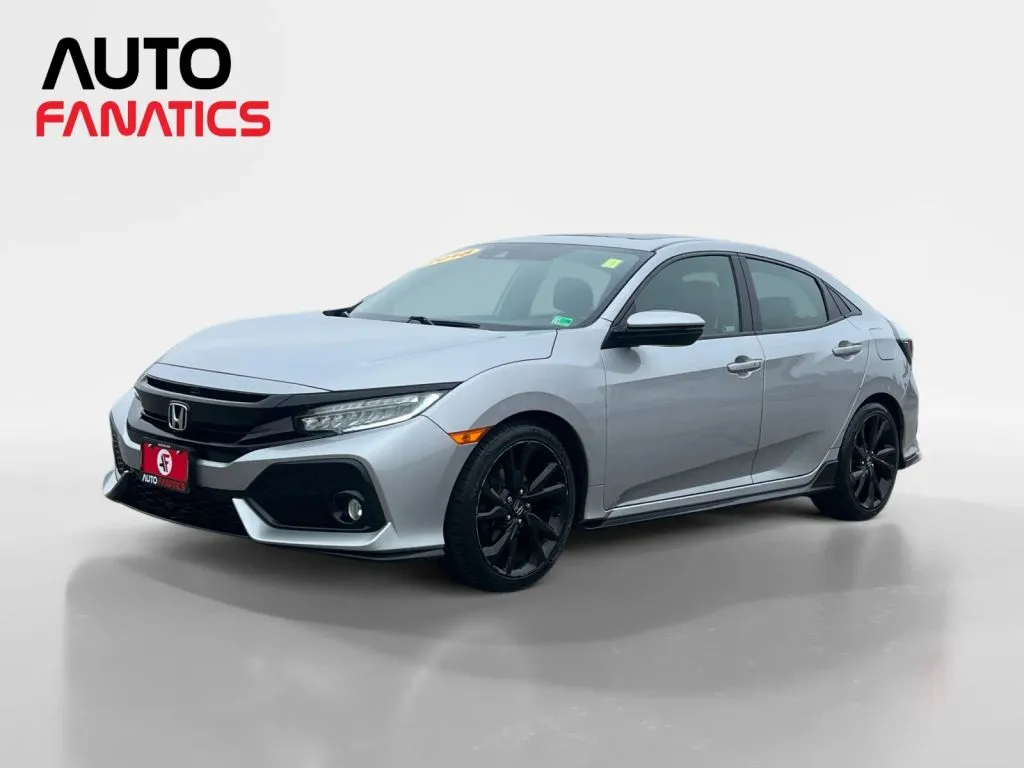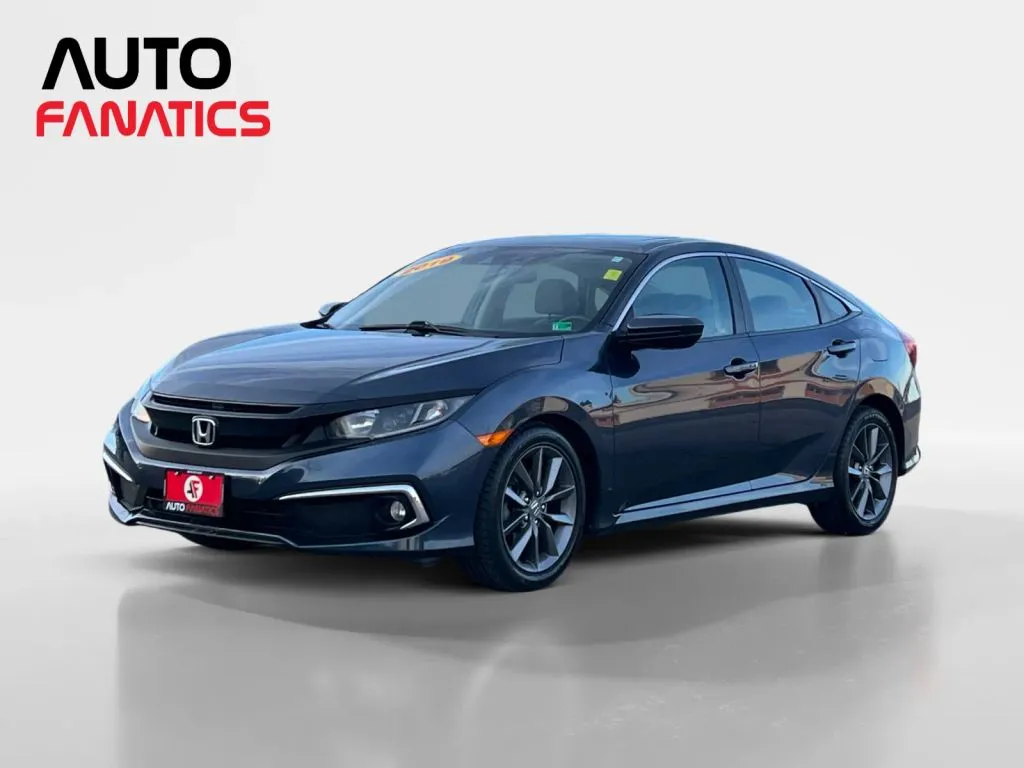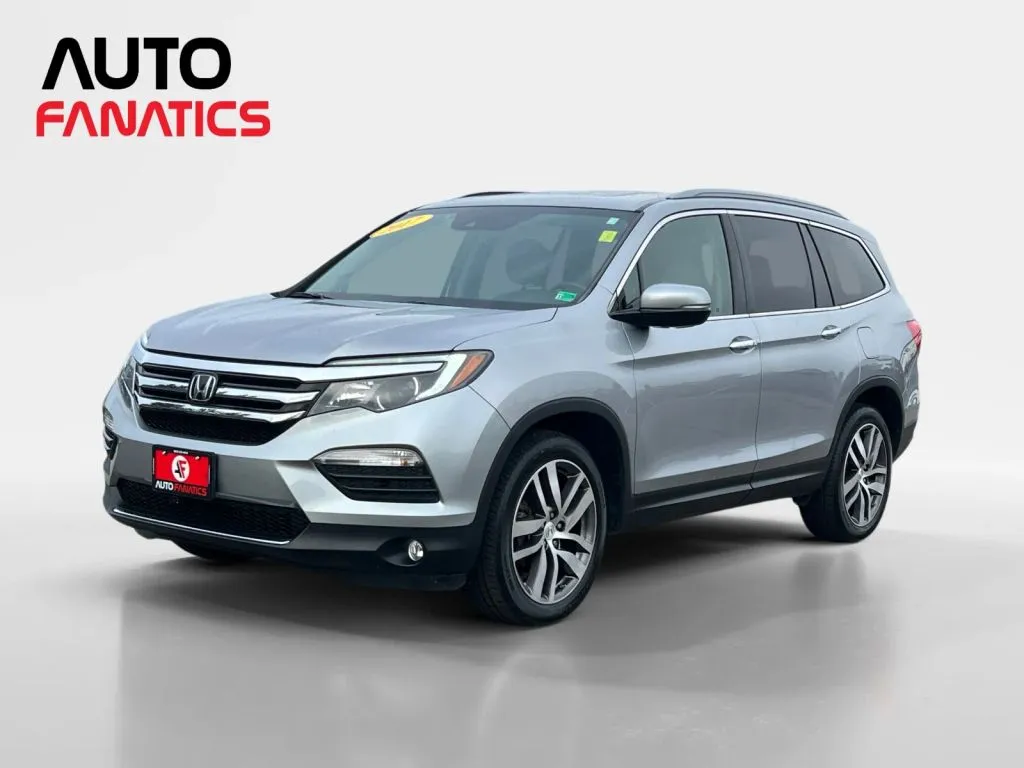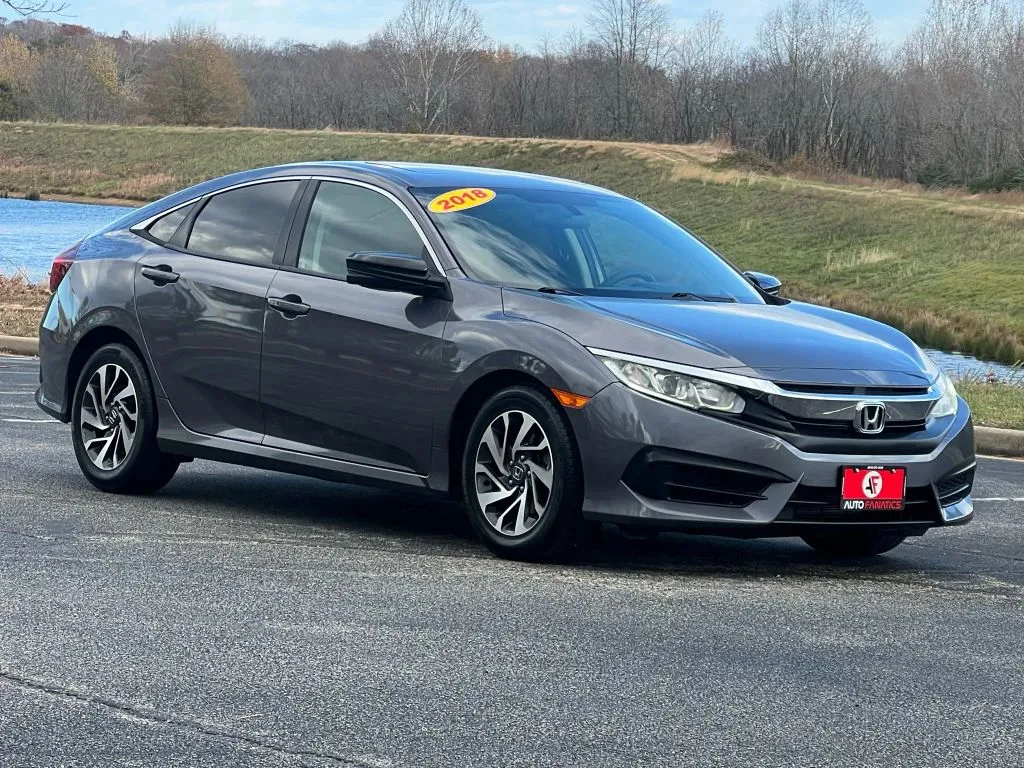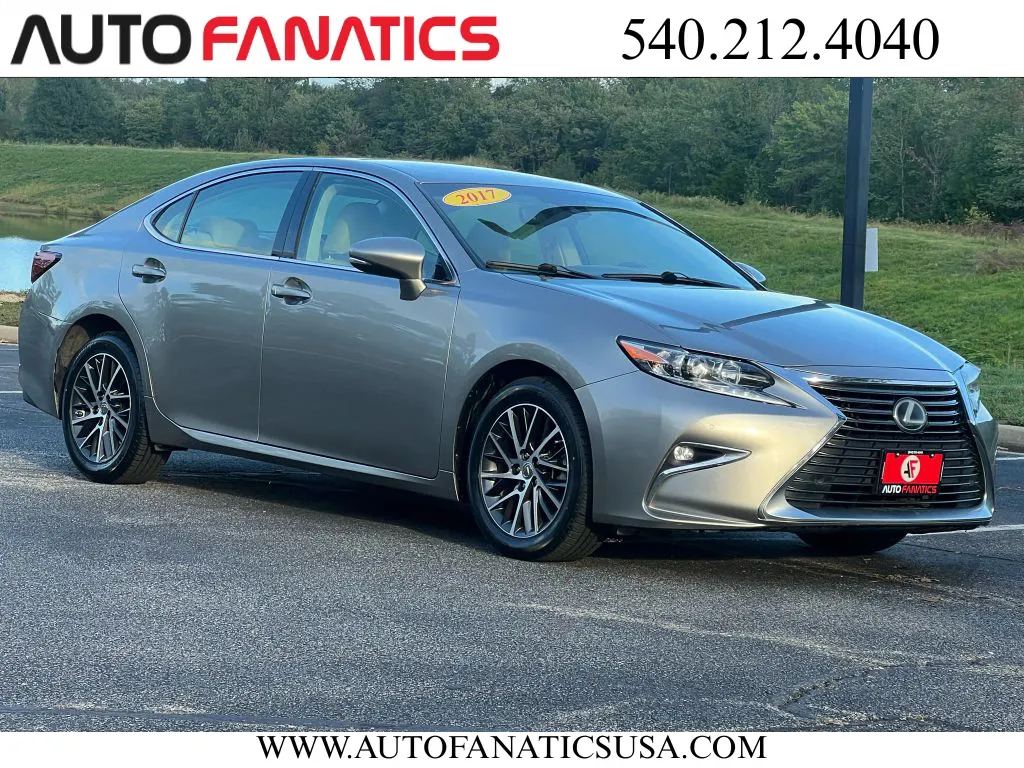How to Estimate Used Car Payment for Your Budget
You wouldn't build a bookshelf without a tape measure and instructions, and you shouldn't shop for a car without the right financial tools. Think of online calculators, credit score checkers, and trade-in estimators as your personal toolkit for making a smart purchase. These resources take the guesswork out of the equation and make it simple to estimate used car payment options from the comfort of your home. Using them helps you set a realistic budget and shop with total confidence. We’ll walk you through the best tools available so you can feel prepared and find the perfect vehicle without any financial stress.
Key Takeaways
- Look Beyond the Monthly Payment: A low monthly payment can be tempting, but it often hides a longer loan term and higher total interest. Focus on the vehicle's total price and the loan's APR to understand the true cost and avoid overpaying in the long run.
- Your Down Payment and Credit Score are Key: These two factors have the biggest impact on your loan terms. Aiming for a down payment of at least 20% and knowing your credit score beforehand will help you secure a lower interest rate and a more affordable payment.
- Plan Ahead with Online Tools: Use online calculators, trade-in estimators, and pre-qualification forms before you start shopping. These tools empower you to set a realistic budget, understand your buying power, and negotiate with confidence.
What Goes Into a Used Car Payment?
Figuring out your monthly car payment can feel like solving a puzzle. It’s not just the sticker price of the car; several pieces come together to form that final number you’ll pay each month. Understanding these components is the first step to finding a vehicle that fits comfortably within your budget. At Auto Fanatics, we believe in making this process clear and straightforward—it’s a big reason why over 500 drivers have given us five-star reviews. We want you to feel confident and in control.
Your monthly payment is mainly shaped by the total amount you borrow, the interest rate you get, and how long you take to pay it all back. Let's break down exactly what that means for you.
The Main Parts of Your Payment
While the average monthly payment for a used car is around $529, this is just a starting point. Your payment will be unique to your situation. The three main factors that determine your monthly cost are the loan amount, interest rate, and loan term. The loan amount is the car's price minus your down payment and any trade-in value. The interest rate is the percentage the lender charges for borrowing the money. Finally, the loan term is the length of time you have to repay the loan, usually between 36 and 72 months. You can use a car loan calculator to adjust these numbers and see what fits your budget.
How Your Credit Score Plays a Role
Your credit score is a major player in determining your interest rate. Lenders use it to gauge how likely you are to repay your loan on time. A higher credit score typically gets you a lower interest rate, which means a smaller monthly payment and less money paid over the life of the loan. Aiming for a score of 661 or higher can open the door to more favorable terms. Before you start shopping, it’s a great idea to check your credit report for any errors. Knowing your score helps you understand what to expect and allows you to get pre-qualified with confidence.
The True Cost of Owning a Car
Your monthly payment is just one part of the financial picture. To create a realistic budget, you need to consider the total cost of ownership. This includes expenses that go beyond your loan, such as car insurance, regular maintenance like oil changes and tire rotations, fuel, and potential repairs. A good rule of thumb is to make a down payment of at least 20% to lower your loan amount. Factoring in these ongoing costs ensures your new-to-you car remains a joy, not a financial strain. You can also explore automotive protection plans to help manage unexpected repair costs down the road.
Key Factors That Shape Your Monthly Payment
When you’re figuring out a car payment, several key pieces come together to form that final monthly number. It’s not just about the sticker price; your down payment, loan details, and even the car you’re trading in all play a major role. Understanding these factors will help you see the full picture and find a payment that truly fits your budget.
The Car's Price and Your Down Payment
The price of the car is your starting point and the biggest factor in your loan amount. While it’s easy to get focused on the monthly payment, a common mistake is to overlook the vehicle's total cost. A lower overall price means you borrow less. This is where your down payment makes a huge impact. A larger down payment reduces the amount you need to finance, which can lower your monthly payment and the total interest you pay over time. Many financial experts suggest aiming for a down payment of at least 20%. The more you can put down upfront, the better your financial position will be.
Interest Rates and Loan Terms
Your interest rate and the length of your loan—the loan term—are two other critical pieces of the puzzle. The interest rate, often shown as an Annual Percentage Rate (APR), is essentially the cost of borrowing money and is heavily influenced by your credit score. A lower rate means you'll pay less over the life of the loan. The loan term is how long you have to pay it back. A longer term, like 72 months, will give you a lower monthly payment, but you'll pay more in interest. A shorter term means higher payments, but you'll pay the car off faster and save money. You can get pre-qualified online to see what rates you might be eligible for.
Your Trade-in's Value
Do you have a car you're planning to replace? Its trade-in value can make a huge difference in your new payment. Think of your trade-in as a big part of your down payment. The value of your current vehicle is subtracted directly from the price of the car you want to buy, which reduces the total amount you need to finance. This can lead to a much more manageable monthly payment and save you money on interest. Before you start shopping, it’s a great idea to get an estimate for your trade-in so you have a clear idea of how it will impact your budget.
Extra Ownership Costs to Consider
Your monthly car payment isn't the only expense to plan for. To get a true picture of affordability, you need to think about the total cost of ownership. This includes costs that won't be in your loan but will definitely be in your monthly budget. You'll need to account for car insurance, which can vary widely based on the car you choose. Also, factor in estimated costs for fuel and routine maintenance. To safeguard against unexpected repair bills, you might consider automotive protection plans. Considering these costs upfront helps ensure your new car fits comfortably into your life, not just your loan payment.
How to Calculate Your Used Car Payment
Figuring out your potential car payment is one of the most important steps in the buying process. It helps you set a realistic budget and shop for a vehicle you can comfortably afford without stretching your finances too thin. While it might seem like a lot of numbers, breaking it down is easier than you think. Let’s walk through a few simple methods and key terms to help you calculate a payment that works for you.
A Simple Guideline: The 20/3/8 Rule
If you’re looking for a straightforward way to gauge affordability, the 20/3/8 rule is a great starting point. It’s a simple financial guideline designed to keep your car purchase from overwhelming your budget. Here’s how it works:
- 20% Down Payment: Aim to put down at least 20% of the car’s price upfront. A larger down payment reduces the amount you need to finance, which means lower monthly payments and less interest paid over the life of the loan.
- 3-Year Loan Term: Try to pay off the loan within three years (36 months). While longer terms offer lower monthly payments, they also mean you pay significantly more in total interest.
- 8% of Your Income: Your total transportation costs—including your payment, insurance, gas, and maintenance—should not exceed 8% of your gross monthly income.
Let an Online Calculator Do the Math
The fastest and most accurate way to estimate your monthly payment is to use a digital tool. An online car loan calculator does all the heavy lifting for you. You can input different numbers to see how they affect your payment. Simply enter the vehicle price, your estimated down payment, and your trade-in value. Then, you can adjust the interest rate and loan term to see how those changes impact the monthly cost. This allows you to experiment with different scenarios until you find a combination that fits perfectly within your budget. It’s a simple way to get a clear financial picture before you even step onto the lot.
APR vs. Interest Rate: What's the Difference?
When you start looking at loan offers, you’ll see two terms: interest rate and APR. They might seem similar, but they represent different things. The interest rate is simply the percentage a lender charges you to borrow money. The Annual Percentage Rate (APR), however, gives you a more complete picture. The APR includes the interest rate plus any additional lender fees or charges rolled into the loan. Because it covers the total cost of borrowing, you should always use the APR to compare loan offers from different lenders. This ensures you’re making a true apples-to-apples comparison.
Map Out Your Payment Plan
Beyond general rules, it’s smart to create a payment plan based on your personal take-home pay. A good target is to keep your car payment at or below 10% of your monthly take-home income. For total car expenses—including your payment, insurance, fuel, and potential repairs—try to stay under 20%. Sticking to these percentages helps ensure you have plenty of room in your budget for other living expenses and savings. Getting a clear idea of what you can afford is the first step, and you can even get pre-qualified to see what loan terms you’re likely to receive.
Your Toolkit for Calculating Payments
Figuring out your potential car payment doesn't have to be a guessing game. There are some fantastic, easy-to-use tools that can give you a clear picture of your finances before you even step into a dealership. Think of these as your personal finance assistants for car buying. Using them will help you feel confident and prepared, so you can focus on the fun part: finding the perfect car. Let's walk through the essential tools you should have in your back pocket.
Online Payment Calculators
Online payment calculators are your best friend for running different payment scenarios. You can plug in the car's price, your down payment, an estimated interest rate, and the loan length to see how the numbers shake out. Playing with these variables helps you understand how a bigger down payment affects your monthly bill. We have a handy car loan calculator on our site to help you get started. It’s a straightforward way to find a payment that fits comfortably within your budget, so you can shop with confidence.
Credit Score Checkers
Your credit score is a major player in determining the interest rate you'll be offered. Before you start shopping, it's smart to know where you stand. You can get free copies of your credit reports to check for errors that might be holding you back. A higher score generally means a lower interest rate, which saves you money. If you’re ready to see what financing options are available for you, you can get pre-qualified with us. It’s a simple step that gives you real-world numbers.
Trade-in Value Estimators
If you have a car to trade in, its value can make a big difference in your new payment. An online estimator can give you a solid baseline for what your current vehicle is worth. This amount can be put directly toward your down payment, lowering the total amount you need to finance. Trading in is convenient and can offer tax advantages in Virginia. We make it easy to get your trade-in value online, so you can see how much you have to work with before you visit.
Insurance Quote Tools
Don't let car insurance be an afterthought. It's a required expense, and lenders will insist on full coverage for a financed car. The cost can vary a lot based on the car you choose and your driving record. Use online insurance quote tools to compare rates for the types of vehicles you're considering. Getting a few quotes ahead of time will prevent any surprises and give you a more accurate total cost of ownership. This helps you budget for everything, not just the car payment itself.
Common Mistakes to Avoid When Estimating Payments
Calculating your car payment is a huge step toward finding the right vehicle for your life and budget. But it's easy to make a few common missteps that can lead to financial stress down the road. By being aware of these potential pitfalls, you can approach your car-buying journey with confidence and clarity. Let's walk through the mistakes to watch out for so you can make a smart, informed decision.
Focusing Only on the Monthly Number
It’s so tempting to zero in on that one magic number: the monthly payment. If it fits in the budget, it’s a go, right? Not so fast. Focusing only on the monthly payment is one of the biggest mistakes you can make because it doesn't show the full picture. A dealership can lower that monthly figure by extending the loan term, but a longer term often means you'll pay significantly more in interest over the life of the loan. Always look at the total cost of the vehicle, including interest, to understand what you’re truly paying. A car loan calculator is a great tool for comparing how different loan terms affect your total cost.
Forgetting About Extra Expenses
The sticker price isn't the final price. When you buy a car, you also have to account for taxes, title, and registration fees. These costs can add a surprising amount to your total and are often overlooked when you’re just estimating the payment on the car itself. A transparent dealership will always be upfront about these additional expenses so there are no last-minute surprises when you’re signing the paperwork. At Auto Fanatics, we pride ourselves on a clear and honest process, which is a big reason we have over 500 five-star customer reviews. We want you to feel completely comfortable with every part of the purchase.
Ignoring the Total Interest You'll Pay
That low monthly payment we talked about can hide a mountain of interest. When you stretch a loan out over six or seven years, the total interest paid can sometimes add up to thousands of dollars. It’s crucial to pay attention to the Annual Percentage Rate (APR) and understand how it impacts your total loan cost. Getting a great rate can save you a lot of money. That’s why it’s a smart move to get pre-qualified for financing early in the process. It gives you a clear idea of the interest rates you can expect and helps you set a realistic budget based on the total cost, not just the monthly payment.
Underestimating Insurance and Maintenance
Your financial commitment doesn't end when you drive off the lot. The true cost of ownership includes ongoing expenses like insurance, fuel, and maintenance. The type of car you buy can dramatically affect these costs—a large SUV will likely have higher insurance premiums and fuel expenses than a compact sedan. You should also budget for routine maintenance like oil changes and new tires, as well as potential unexpected repairs. Considering automotive protection plans can also be a wise way to manage future repair costs and give you peace of mind.
Smart Ways to Lower Your Monthly Payment
Getting a great car is exciting, but you also want a monthly payment that fits comfortably into your budget. The good news is you have more control over that number than you might think. A few strategic moves before and during the car-buying process can make a significant difference, saving you money each month and over the life of your loan. It’s all about understanding the key levers you can pull to get the best possible terms. From strengthening your financial standing to making smart choices at the dealership, here are some practical ways to lower your monthly car payment.
Improve Your Credit Score
Your credit score is one of the biggest factors lenders use to determine your interest rate. A higher score signals that you’re a lower-risk borrower, which usually translates to a lower APR and, consequently, a smaller monthly payment. Before you start car shopping, take some time to check your credit reports from all three major bureaus. Dispute any errors you find right away. A simple way to give your score a lift is to pay down credit card balances, aiming to keep your outstanding debt at 30% or less of your total credit limit. Even a small improvement can save you a surprising amount of money over the course of your auto loan.
Make a Larger Down Payment
The more money you can put down upfront, the less you’ll need to borrow. A smaller loan amount directly leads to a lower monthly payment. While there’s no magic number, many financial experts recommend putting down at least 20% of the vehicle’s purchase price. This not only reduces your payment but can also help you get approved for a loan with a better interest rate. A substantial down payment shows the lender you’re serious and financially stable. You can use a car loan calculator to see exactly how different down payment amounts will impact your monthly costs.
Negotiate the Car's Price
It’s easy to get fixated on the monthly payment, but one of the most effective ways to lower it is to negotiate the car's total price. Every dollar you shave off the sticker price is a dollar you don’t have to finance. Before you even start talking about financing, focus on agreeing to a fair purchase price for the vehicle. Do your research on the specific cars, trucks, or SUVs you’re interested in to understand their market value. At Auto Fanatics, we pride ourselves on a transparent, no-pressure sales approach, so you can feel confident you’re starting from a fair and honest price point.
Shop Around for the Best Loan
Don’t assume the first loan offer you receive is the best one you can get. Interest rates can vary significantly between lenders, so it pays to shop around. Check with your personal bank, local credit unions, and online lenders to see what terms they can offer. Getting pre-approved for a loan before you visit the dealership gives you a powerful baseline to compare against. It shows you what you can afford and gives you negotiating power. We make this easy by helping you get pre-qualified with Capital One right on our website, so you can shop with confidence.
Choose the Right Loan Length
The length of your loan, or the term, directly affects your monthly payment. A longer term, like 72 or 84 months, will result in a lower monthly payment, which can be tempting. However, it’s important to remember that a longer loan means you’ll pay more in total interest over time. A shorter term, like 48 or 60 months, will have a higher monthly payment, but you’ll pay off the car faster and save on interest. The key is to find a balance that works for your budget without stretching the loan out so long that you end up paying much more than the car is worth.
Where to Get Your Car Loan
Finding the right car is exciting, but finding the right loan is just as important for your financial health. You have several options when it comes to financing your next vehicle, and each has its own advantages. The best path for you depends on your comfort level with the process and how much you like to shop around. Exploring these avenues ahead of time can save you money and make the final purchase feel smooth and stress-free. Let’s walk through the most common places to secure an auto loan.
Your Bank or Credit Union
One of the most traditional routes is to work with your own bank or credit union. Securing a loan from an institution you already have a relationship with can be a comfortable process. The biggest advantage here is that you can get pre-approved before you even step onto a car lot. Walking in with a pre-approval letter is like having cash in hand—it puts you in a strong negotiating position and allows you to focus on the vehicle's price, not just the monthly payment. This approach gives you a clear budget and the confidence to shop for the car you truly want.
Dealership Financing
For a streamlined, one-stop-shop experience, dealership financing is incredibly convenient. Instead of juggling applications with different lenders, you can handle both the car purchase and the financing in one place. At Auto Fanatics, we work with a network of trusted lenders to find competitive rates for our customers, regardless of their credit situation. Our finance team is here to walk you through the options transparently, ensuring you understand every detail. You can even get approved online through our secure application to save time before you visit. It’s all part of the simple, no-pressure experience our 500+ five-star reviews are built on.
Online Lenders
If you prefer to do your research from home, online lenders offer another great option. These digital-first companies specialize in auto loans and often provide competitive interest rates. The process is typically fast and entirely online. A smart strategy is to apply to a few different online lenders within a two-week period. Credit scoring models usually treat multiple auto loan inquiries in a short timeframe as a single event, which minimizes the impact on your credit score. This allows you to compare offers side-by-side and choose the one that best fits your budget.
The Power of Getting Pre-Qualified
Getting pre-qualified is your secret weapon for a stress-free car-buying journey. It’s a simple first step that gives you a realistic estimate of how much you can borrow without impacting your credit score. Knowing your numbers upfront prevents you from falling in love with a car that’s outside your budget. At Auto Fanatics, you can pre-qualify with Capital One right on our website. There’s no commitment and no effect on your credit. Once you have your pre-qualified amount, you can confidently browse our inventory of high-quality cars, trucks, and SUVs knowing exactly what works for you.
Planning for Protection Plans and Other Costs
When you’re focused on the monthly payment, it’s easy to overlook the other costs that come with buying a car. Thinking about these expenses from the start helps you create a realistic budget with no surprises. The final price of your vehicle includes more than just the sticker price; it also covers essential government fees and optional protection plans that can save you a lot of money and stress down the road.
Planning for these items is a key part of a smart car-buying strategy. It ensures the total amount you finance is accurate and that your monthly payment truly fits your budget. At Auto Fanatics, we believe in total transparency, which is why we walk you through every line item. We want you to feel confident and prepared for the total cost of ownership. Before you get too far, it’s a great idea to play with the numbers using a car loan calculator to see how these additions affect your payment.
GAP Insurance
Let’s talk about a scenario no one wants to imagine: your car is stolen or totaled in an accident. Your standard auto insurance will pay out the car's current market value, but what if you owe more on your loan than the car is worth? That difference, or "gap," is what you’d be responsible for paying out of pocket. GAP (Guaranteed Asset Protection) insurance is designed to cover that exact difference. It’s a financial safety net that ensures you aren’t left making payments on a car you can no longer drive. It’s especially important if you’re making a smaller down payment or have a longer loan term.
Extended Warranties
While the vehicles at Auto Fanatics are thoroughly inspected for quality and reliability, an extended warranty offers an extra layer of security. Most used cars are past their original manufacturer's warranty period. An extended warranty, also known as a vehicle service contract, steps in to cover the costs of certain repairs after you buy the car. This can provide incredible peace of mind, protecting you from unexpected and potentially expensive repair bills. Think of it as a predictable way to manage future maintenance costs, so a surprise issue doesn’t throw your budget off track.
Vehicle Service Contracts
Similar to extended warranties, vehicle service contracts are an excellent way to protect your investment. These plans are designed to cover specific repairs and services, helping you manage the long-term costs of owning a car. Instead of facing a large, unexpected bill for a covered component, you can rely on your service contract to handle it. We offer a variety of automotive protection plans to fit different needs and budgets, giving you the confidence to drive worry-free. It’s all about making car ownership as predictable and stress-free as possible.
Registration and Taxes
Finally, don't forget about the costs required by the government: sales tax, title, and registration fees. These are non-negotiable expenses that are part of every vehicle purchase. The exact amounts vary depending on where you live in Virginia, but they will be added to the final sale price of your car. Factoring these into your budget from the beginning is crucial for an accurate payment estimate. When you work with us, we’ll lay out all these costs clearly so you know exactly what to expect for your "out-the-door" price.
Related Articles
- How to Estimate Car Payment: A Simple Guide
- Car Loans Calculator: The Ultimate User's Guide
- How to Use a Calculator to Estimate Car Payment
- Estimate Car Loan Payment: A Simple Guide
- Estimate a Car Payment: The Ultimate Guide
Frequently Asked Questions
What's more important: a low monthly payment or a shorter loan term? This is a great question because it gets to the heart of smart financing. While a low monthly payment feels great for your budget, it's often achieved by stretching the loan out over a longer period. A shorter loan term means higher monthly payments, but you'll pay the car off much faster and save a significant amount of money on interest. The best approach is to find a healthy balance—a payment you can comfortably afford on the shortest loan term that still fits your monthly budget.
How much of a down payment do I really need for a used car? While the common guideline is to aim for a 20% down payment, there's no strict rule. The real goal of a down payment is to reduce the amount of money you need to borrow. The more you put down, the lower your monthly payment will be and the less interest you'll pay over time. Any amount you can contribute upfront is a positive step that will improve your financial position with the loan.
Can I still get a car loan if my credit isn't perfect? Absolutely. Many people think that less-than-perfect credit is a barrier to getting a car, but that's often not the case. We work with a wide network of lenders who specialize in helping people across the credit spectrum. The best first step is to see what options are available to you. You can get pre-qualified on our website to understand your standing without any pressure or commitment.
How does trading in my old car actually lower my new payment? Think of your trade-in as a big part of your down payment. The value of your current vehicle is subtracted directly from the sale price of the car you want to buy. This reduces the total amount you need to finance, which in turn leads to a smaller, more manageable monthly payment. It’s a simple and effective way to make your next car more affordable.
Besides the payment, what other costs should I budget for monthly? Your monthly car payment is just one piece of the puzzle. To get a true picture of affordability, you need to account for the total cost of ownership. This includes your car insurance premium, the average amount you'll spend on fuel each month, and a little set aside for routine maintenance like oil changes and tire rotations. Factoring in these ongoing expenses ensures your new car fits comfortably into your entire financial life.

